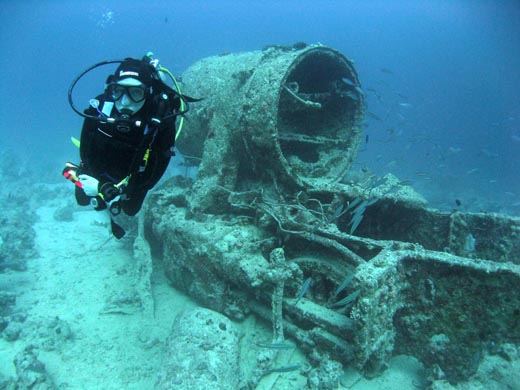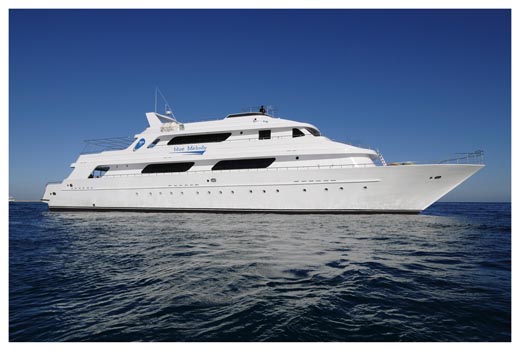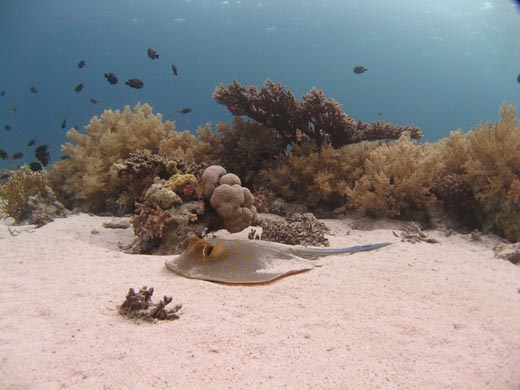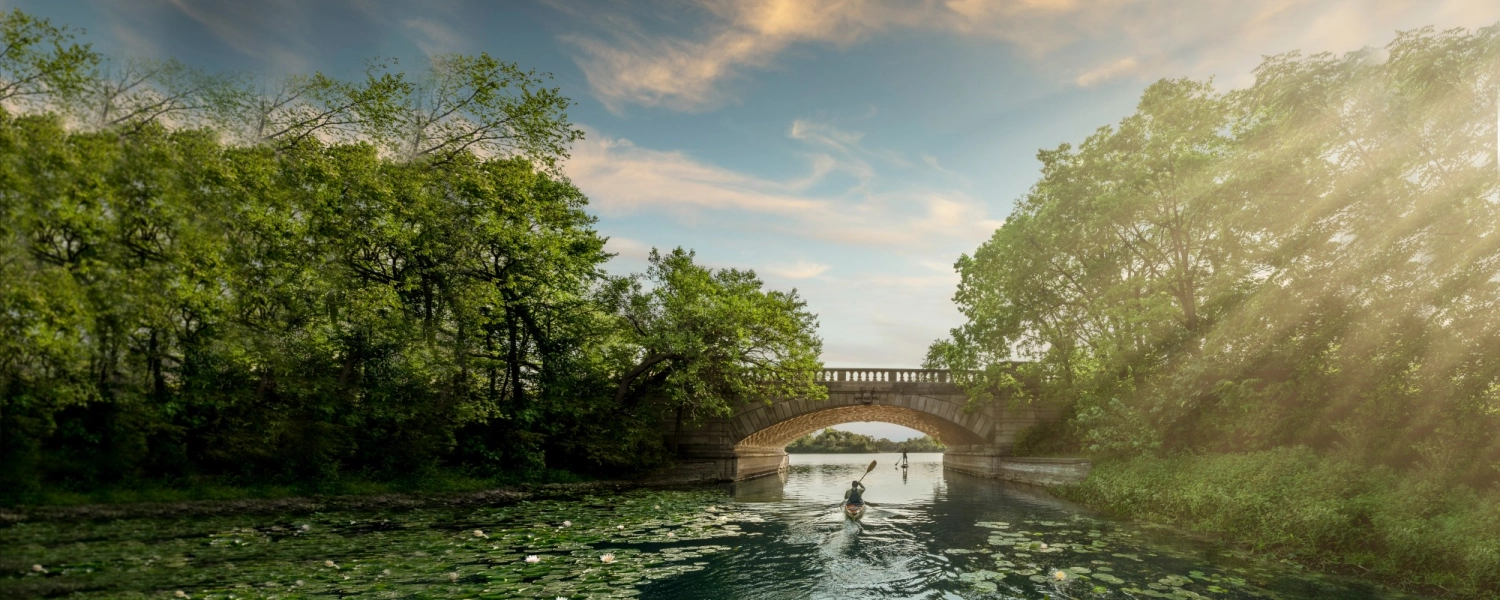- Details
- Written by: David
I’m looking around the cargo hold of a ship. It’s packed with antiques – relics of the Second World War. There are trucks, motorbikes, shells and rifles, packed tight into the dark, cramped space. But this ship isn’t afloat – it’s 20m below the surface of the water, and colourful exotic fish flit in and out of its portholes and cabins.
I’m scuba diving on Egypt’s most famous wreck – the Thistlegorm. A British ship, sunk in 1941 in the Red Sea after being bombed by a German plane, it still holds its cargo of vehicles and ammunition that had been destined to supply the army in North Africa. It draws divers from all over the world – in fact this wreck makes more money for the Egyptian tourist industry than the Pyramids, according to our dive guide.

And it’s easy to see why. At 128m long, it’s a massive wreck, but its uniqueness lies in its well-preserved cargo that transforms the ship into an underwater museum – a step back in time.
The Thistlegorm is just one highlight of diving in Egypt. I joined a liveaboard to explore some of the northern Red Sea’s best dive sites. For a week, I was living, sleeping and diving from the boat, together with 25 other travellers.
Each day starts early, with a cup of tea at 6am. Serious dive enthusiasts don’t have a lie in! After a dive briefing, we’re in the water for a dive up to an hour long. Only after we surface, rejoin the boat and dry off do we eat breakfast.
A second dive in the late morning is followed by lunch and a chance to relax in the sun on deck before pulling our wetsuits on again for the afternoon dip. After sunset, there’s the opportunity to do a night dive, then dinner is served. It’s an action-packed and exhausting day and I’m generally in bed by 9 o’clock, tired out from all the exertion.

While this might seem a punishing routine for a holiday, it’s well worth it (and there’s no imperative to do every dive!). Liveaboards can reach far-flung dive sites that boats on day trips can only dream of. We visited incredible wrecks and reefs, spotted dolphins from the dive deck and watched the sun set over the mountains of the desert from the middle of the Red Sea. Almost every dive was at a different site.
Another of my favourite dives from the week was at Ras Mohammed National Park on the point of the Sinai Peninsula. Here, a steep reef wall drops to an incredible depth of 700m, and the corals are varied and colourful. It’s the perfect place to see a wide range of marine life from the small but pretty reef fish, such as butterfly fish, angel fish and lionfish, to the larger pelagic species such as tuna, barracuda and jacks.

When you dive in the Red Sea there’s the chance of seeing bigger creatures too. Turtles are common, as are bluespotted stingrays that lie on sandy seabeds. More uncommon, but occasionally seen, are the massive whale shark and the indescribably elegant manta ray. Then there are sharks. I’ve occasionally seen white tip reef sharks and grey reef sharks at dive sites far from land. There are other species found here, including thresher and oceanic white tip sharks, but you have to be very lucky – or specifically looking for them – to get a sighting. There are increasingly fewer sharks around as they become victims of indiscriminate fishing or targeted for their fins, which command a high price in Asia as an ingredient for shark fin soup.

There are a couple of downsides to life on a boat – cabins can be a little small, and you need to be prepared if you’re susceptible to seasickness. We had a couple of bumpy crossings. But this is an excellent way to dive. There’s none of hassle of setting up your dive kit that’s necessary when shore diving – your kit is ready for you to jump in all week - and you invariably find your fellow divers to be chatty and friendly. It’s great for single travellers too, because you’ll meet plenty of like-minded people.
There’s no need to be an experienced diver to take a liveaboard trip – though you do need to have the basic diving qualification. There’s often an option to do further dive training on board. Enthusiasm for the sport is essential though, to get you through those 6am wake up calls! Though if it’s the Thistlegorm waiting for you below the blue, still surface of the sea, believe me, you won’t find it too difficult to drag yourself out of bed.
Essentials
Travel
I flew from London, Gatwick to Hurghada. Transfers from the airport to the boat took 15 minutes.
Equipment
All dive equipment can be hired on board blue Melody.
To book
blue o two
www.blueotwo.com
Tel: 01752 480808




